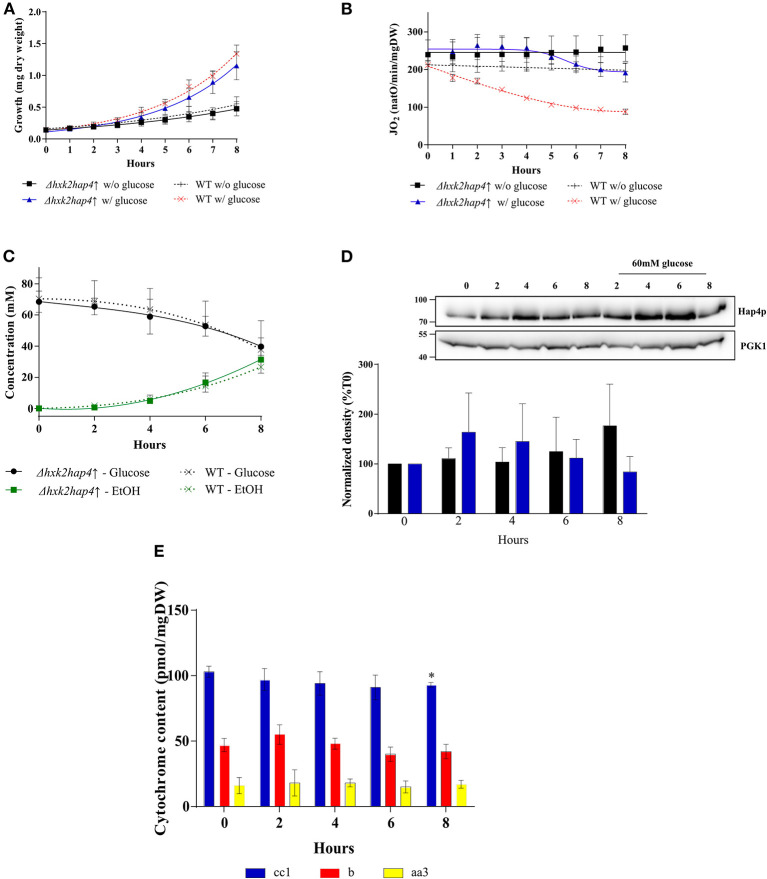Figure 5.
Induction of the Warburg effect in S. cerevisiae Δhxk2hap4↑. A S. cerevisiae strain deleted for hxk2 (Δhxk2) was transformed with pCM189-Hap4p (Δhxk2hap4↑). The growth medium was supplemented with 60 mM of glucose at T0 ( Δhxk2hap4↑) and ( WT) or not (■Δhxk2hap4↑) and (+ WT). (A) Growth was followed for 8 h. Results shown represent means of at least 10 separate experiments ± SD. (B) The respiratory rate was followed for 8 h. Results shown represent means of at least 10 separate experiments ± SD. (C) Glucose consumption (• Δhxk2hap4↑) and (x WT) and ethanol production ( Δhxk2hap4↑) and (x WT) were quantified. Results shown represent means of at least five separate experiments ± SD. (D) The relative levels of the co-activator Hap4p were determined every 2 h. Total protein extracts were analyzed by SDS-PAGE and western blot using antibodies directed against Hap4p and phospho-glycerate kinase (PGK1) as a loading control. Inset: Results representative of at least four experiments are shown. Hap4p signal was quantified, signal intensity was normalized to PGK1 signal and expressed as percentage of T0 for each experiment. The bar-graph shows mean % of T0 ± SD for all experiments. (E) Cytochrome content was quantified every 2 h. Results shown represent means of at least four separate experiments ± SD.

